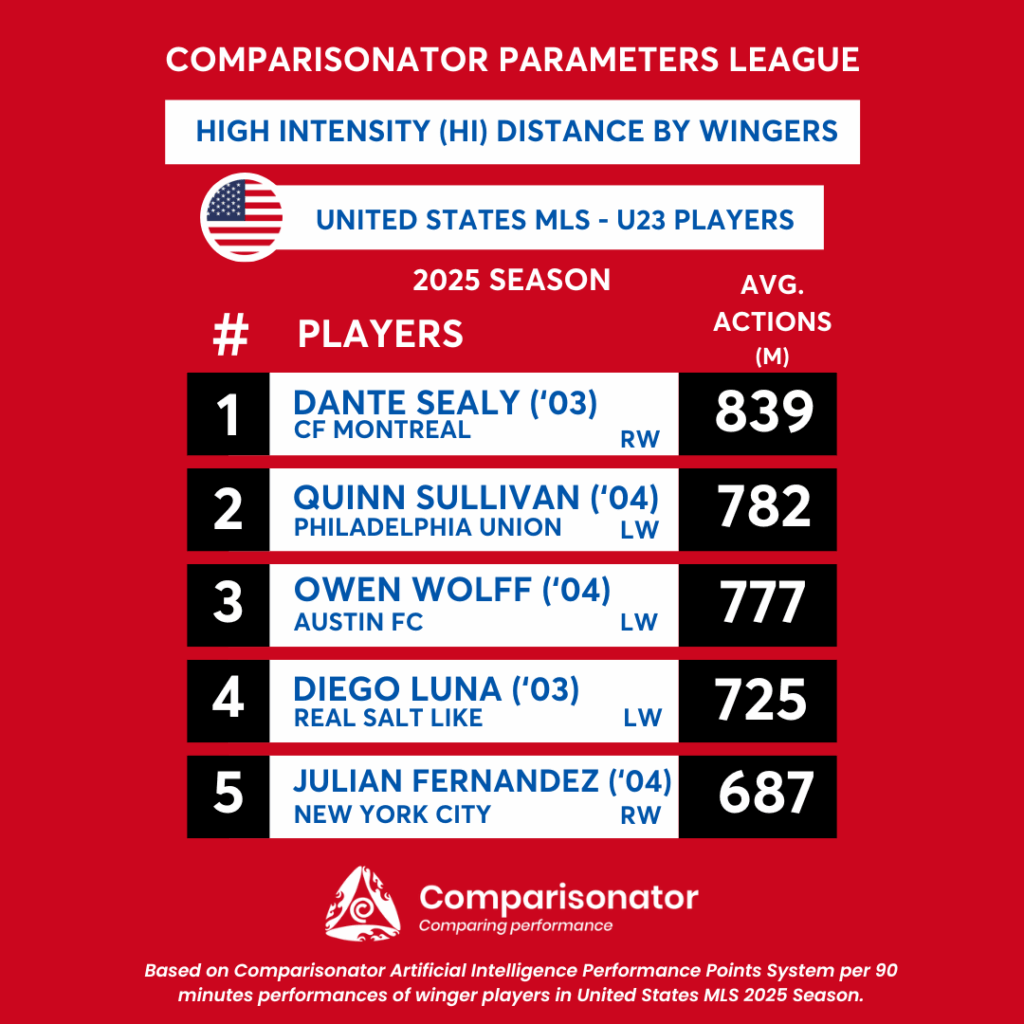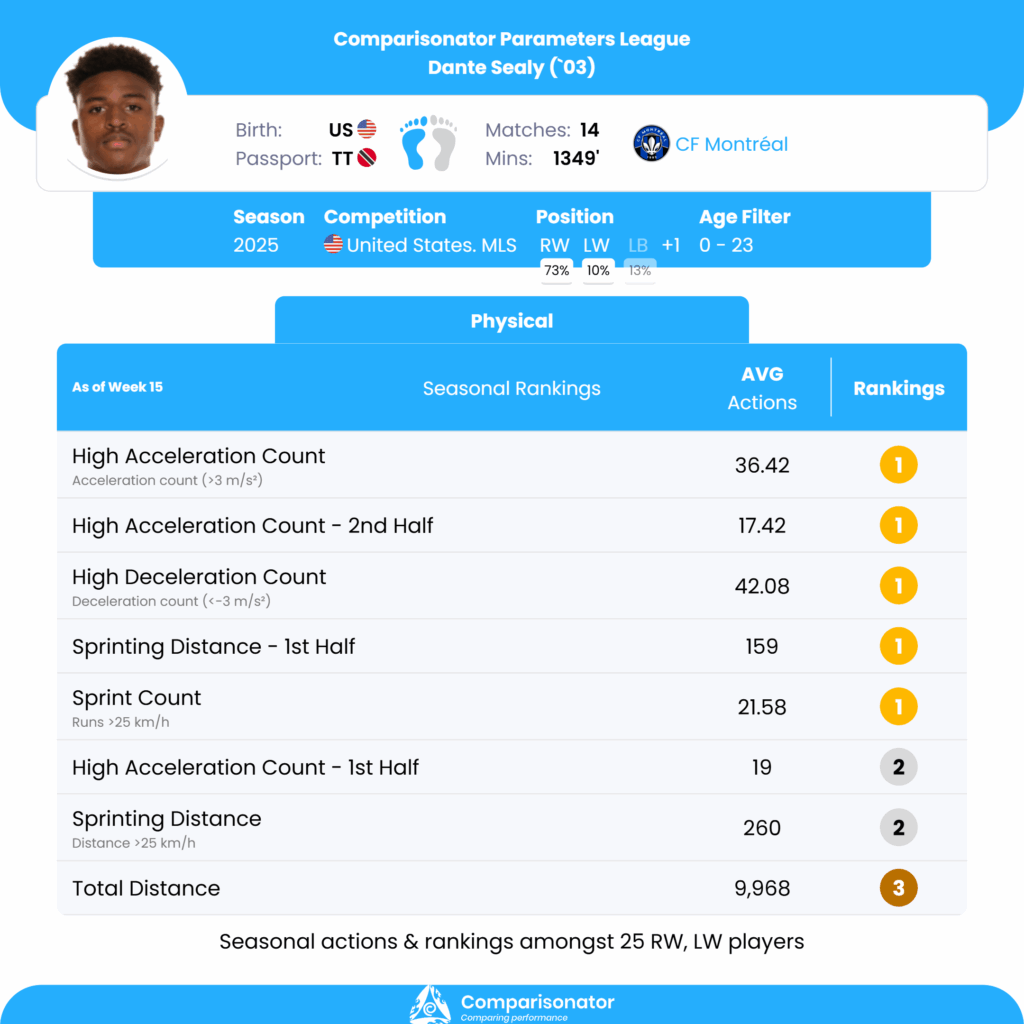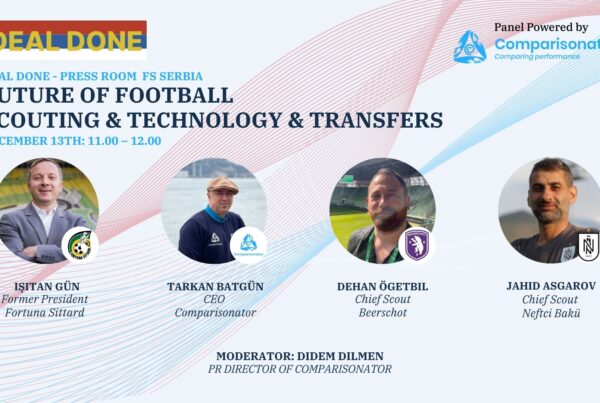As the demands of modern football continue to rise, physical intensity has become a defining factor in identifying top-level talent. Leveraging the advanced capabilities of the Comparisonator Physical Data Comparison Module, we’ve analyzed United States MLS league to spotlight the top-performing U23 players in three key physical metrics during the 2025 season so far. This comprehensive assessment offers clubs, scouts, and analysts valuable insight into emerging players whose physical performance sets them apart.
These findings underscore the increasing significance of physical data in contemporary scouting and recruitment. Extracted from broadcast footage using AI-driven analysis, the metrics provide clubs with accurate, contextualized benchmarks for evaluating talent.
In the High Intensity (HI) Distance category—tracking distance covered at speeds over 20 km/h—Dante Sealy emerges as the leader, demonstrating sustained pace in high-intensity match scenarios. Obed Vargas leads in Total Distance, highlighting his exceptional endurance and relentless work rate across full matches. Meanwhile, Alex Freeman tops the charts in Running Distance, showcasing frequent bursts at speeds exceeding 20 km/h, a testament to his explosiveness and mobility.
These standout performances not only spotlight USA’s next generation of talent but also illustrate how physical analytics can drive smarter, more informed football decisions—from unearthing hidden gems to building dynamic, high-performing squads. Stay tuned as we continue to reveal more data-driven insights throughout the season.
Please note that all numbers are per 90 min data from the 2025 Season – So Far.
Alex Freeman’s CompaGPT Physicals report:
Freeman excels in running distance (1,515.18 meters) and high-speed running distance (627.47 meters) per match, ranking first in both categories. His running distance is notably higher than Luca Bombino’s 1,303.14 meters, and his high-speed running distance narrowly beats Jimer Fory’s 623.78 meters. These strengths suggest his ability to sustain high-intensity efforts, contributing significantly to both offensive support and defensive duties. In the first half, Freeman averages 769.71 meters, outperforming Ilay Feingold’s 724.05 meters. This indicates strong early-game intensity, which can be leveraged to set the tempo and apply pressure on opponents from the onset.
Alex Freeman’s standout parameters are his total distance covered, medium acceleration and deceleration counts, and running/high-speed running distances, all of which position him as a leading performer in these categories. His ability to maintain high physical output is a tactical advantage, although there is potential for development in acceleration, sprint count, and sprinting distance to further enhance his game impact.
Alex Freeman (’04) (RB) – Orlando City
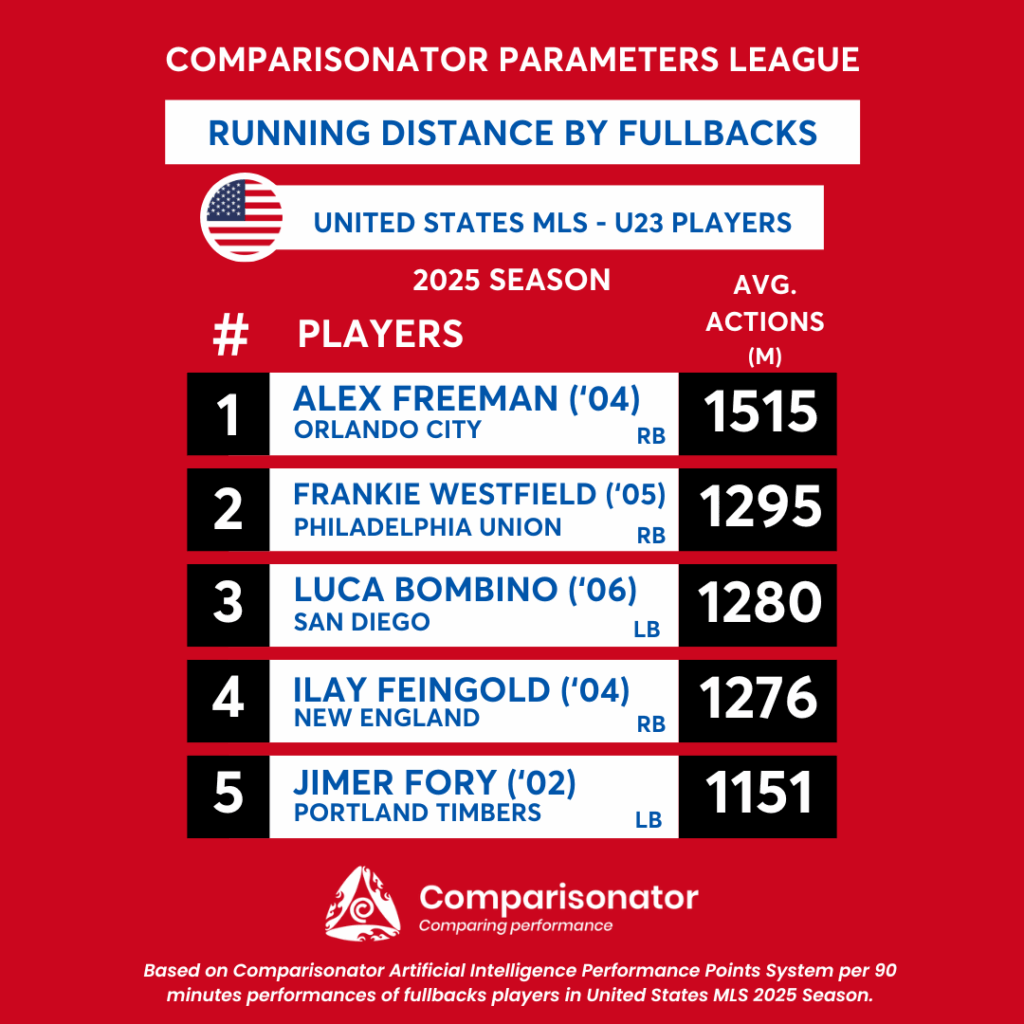
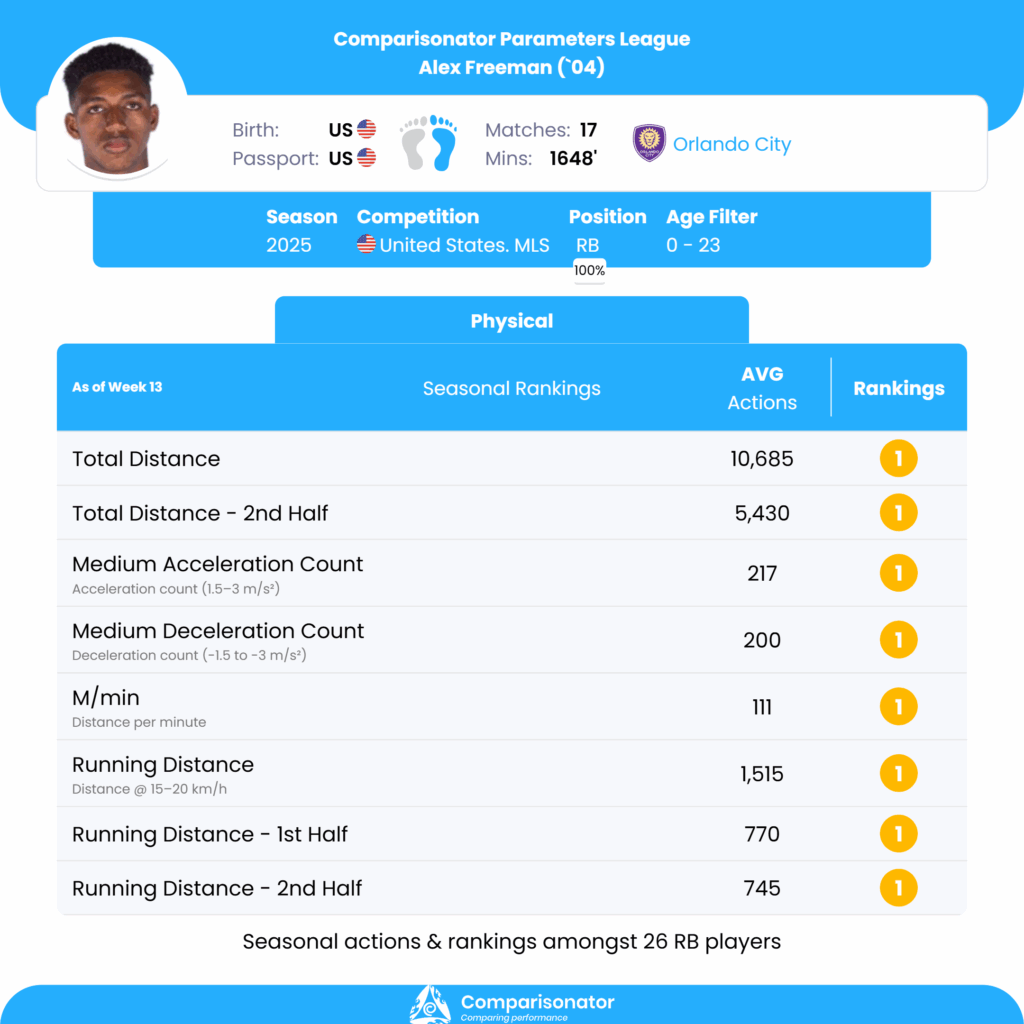
Running Distance
Obed Vargas’s CompaGPT Physicals report:
Obed Vargas ranks 1st in total distance covered per match with an average of 11,131.32 meters, outperforming Daniel Edelman, who ranks second with 10,899.9 meters. This indicates Vargas’s exceptional stamina and ability to contribute consistently throughout matches. His capability to cover extensive ground is tactically significant, allowing him to support both defensive and offensive plays, making him a valuable asset in maintaining team structure and transitioning between phases of play. Vargas leads in running distance covered per match with 2,096.84 meters, highlighting his capacity for sustained physical exertion. Compared to Edelman’s 2,002.63 meters, this places Vargas as a key player in creating dynamism on the field. His running ability can be tactically utilized to press opponents, disrupt their play, and support quick transitions.
Obed Vargas showcases remarkable endurance and running capacity, particularly in total distance metrics, positioning him as a top performer in sustaining physical presence throughout matches. His ability to cover ground and maintain performance into the second half underscores his tactical value. However, there is room for enhancement in high-speed activities, such as sprints and high-speed runs, which may elevate his capacity to influence pivotal match situations dynamically.
Obed Vargas (’05) (CMF) – Seattle Sounders


Total Distance
Dante Sealy’s CompaGPT Physicals report:
Dante Sealy excels in High Acceleration Count, leading the rankings with 36.42 average per match, outperforming Zavier Gozo, who averages 32.67. This indicates Sealy’s remarkable ability to generate bursts of speed, which can be tactically leveraged to create separation from defenders, initiate quick counter-attacks, and exploit spaces in high-pressure situations. Sealy is at the forefront with 21.58 Sprint Count average per match, compared to Zavier Gozo’s 19.33. This reflects his frequent utilization of speed, which can be tactically exploited for making penetrating runs, stretching defenses, and providing dynamic support in offensive plays.
Dante Sealy’s standout performances are evident in High Acceleration and Deceleration Counts, Sprinting Distance, and Sprint Count, positioning him as a physically dynamic player with strengths in speed and rapid directional changes. However, areas such as Max Speed and overall movement intensity (M/min) present opportunities for growth, which can enhance his effectiveness in sustained high-speed plays and maximize his offensive and defensive contributions throughout the match.
Dante Sealy (’03) (RW) – CF Montreal
